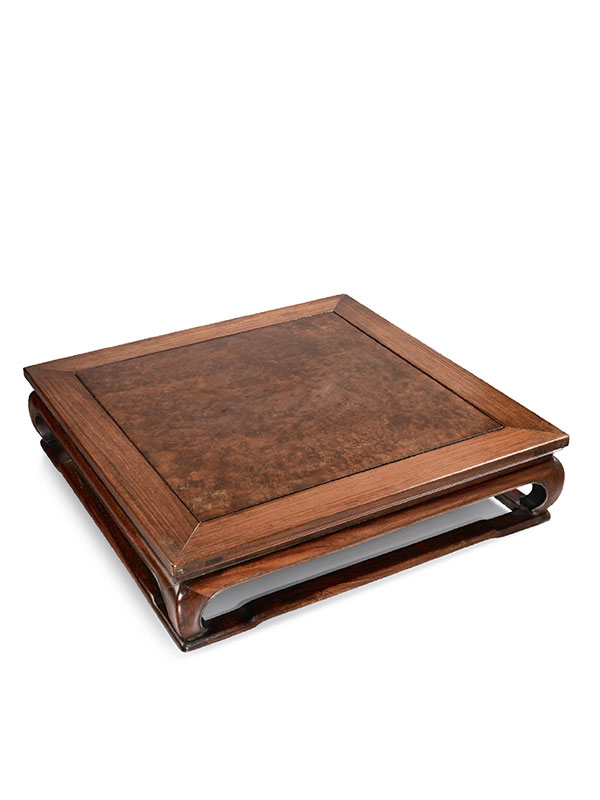Huanghuali and huamu incense stand
China, 17th-18th century
A square incense stand, the framework made of huanghuali, the top inset with a huamu plaque. The top is of standard mitre, mortise and tenon construction. The inset floating plaque is made of a single plank of huamu, supported by a dovetailed transverse stretcher underneath. The upper frame of huanghuali consists of four rectangular elements joined together, supported by four bowed legs, joined by bowed aprons at the top and a hipped stretcher at the bottom.
Huamu is the Chinese term for burl wood. It is unusual to see burl wood used in a Chinese object. A burl is a tree growth in which the grain has grown in a deformed manner. It is commonly found in the form of a rounded outgrowth on a tree trunk or branch that is filled with small knots from dormant buds. Burls yield a very peculiar and highly figured wood, prized for its beauty and rarity. A comparable jichimu stand of rectangular shape and with higher legs was included in an exhibition at the Altfield Gallery in Hong Kong in 1984.[1]
- Rice Jones, R. and Forsyth, A.: Wood from the Scholar’s Table, Chinese Hardwood Carvings and Scholar’s Articles, Altfield Gallery, Hong Kong 1984, no 81, pp. 130-1.

